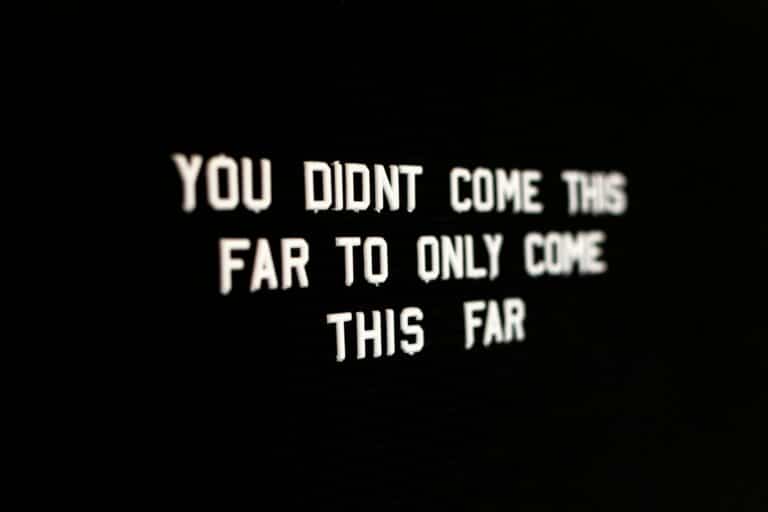Have you found the perfect job but are feeling a little overwhelmed when it comes to writing a cover letter?
Depending on what company you are applying for, a cover letter can be one of the most important parts of your job application.
As if job applications aren’t long enough!
Having a great cover letter gives you a chance to stand out.
It may also help to show how your skills and experience make you an ideal candidate to select for the next stage of the hiring process.
If you’re not sure where to start and want to impress a potential new employer, here are some tips to help create a cover letter with confidence.
1. Keep the cover letter short and focused – one page max
Hiring managers don’t want to read a novel when they’re reviewing your CV.
Your cover letter will be scanned and not read word by word. Keep it short and sweet.
The main thing you want to do is make sure that the person reading it knows:
- your name
- what position you’re applying for, and;
- why they should be interested in hiring someone like you.
If the person reading your cover letter doesn’t get this information as they scan your cover letter, then there’s no reason for them to continue reading on or checking out your CV.
Let’s avoid this!
The best way to do this is by writing an attention-grabbing opening sentence or paragraph that hits all three points (name, the position being applied for and why they should hire someone you).
You also want to try not to use jargon or buzzwords as much as possible—it’s ok if they are part of your industry but remember who will be reading these letters.
2. Make the cover letter unique to you, the job, and the company (if you can)
We appreciate that job boards like Indeed, Monster, TotalJobs and CV Library do not allow you to upload more than one cover letter so it’s tricky to make the letter specific to each vacancy. Consider sending a ‘cover letter’ or short message via LinkedIn to the hiring manager – and consider this to be your cover letter.
Your cover letter is a chance to stand out from the crowd.
If a job posting has hundreds of candidates, it makes sense that yours needs to be unique.
Here’s how:
Make it personal!
Tell your story in such a way that your reader knows exactly why you are right for this particular job and company.
How do you connect with their values?
What role do your skills play in supporting their mission?
What can they expect if they hire you?
These are questions worth answering before hitting ‘Send’ on that application!
Including details about the position and company is tricky when applying via job boards such as Monster, Total Jobs and Indeed. So perhaps ensure you have a strong generic cover letter uploaded to your profile on each of these sites.
This will help them see how well aligned you would be with them as an employee—and whether or not this position is really right for you at this stage in your career path development process.
3. Mention a referral if you have one
If you’ve been referred to the company, ask if it’s okay to mention that person’s name and how you came to know them.
Sometimes we will actually ask people not to share this information with us as it introduces bias into the hiring process. Not all companies act this way though so if the person who has referred you is happy for their name to be mentioned, then go for it!
4. Show you’ve paid attention
Use keywords and phrases from the job description in your cover letter.
Failing to do so shows you have a simple generic cover letter and not really paid attention where needed (and expected!)
The best cover letter writing strategy is to match your cover letter with the job advert.
If you can find some of the keywords and phrases from the ad in your text, you’ll be on track to getting noticed by recruiters, the internal recruitment team or the hiring manager.
For example, if a job description focuses on a desire to hire an individual with an interest and knowledge of golf as well as the office dog, if you genuinely match those detail, make sure you highlight similar wording in your letter.
Sometimes there are easter eggs in the advert to ensure you have read it in full then reference the easter eggs (as they should be obvious!)
5. Include the right details
Your cover letter is a great opportunity to show the hiring manager why they should interview you. Be sure to include details that are relevant and specific to them and this vacancy.
Tell them what problem you are solving by selecting you for an interview.
If you’re applying for a Data Analyst position at a small software company, it’s probably best not to talk about your experience managing an international team of marketers—unless you have some relevant experience in both fields!
6. Proofread, proofread, proofread
Sounds obvious, doesn’t it?
If you send something that’s not proofread, the hiring manager or recruiter will be irritated and that isn’t a good look!
You will likely blow your chances and quite honestly, there are no excuses these days. Grammarly is your best friend when looking for a new job.
- Spell-check and proofread everything you write! Subscribe to Grammarly or Hemingway to help you out.
- Have a friend read it over before submitting your application.
- Proofread it again after your friend has read it, yourself.
- Ask yourself if what you’ve written sounds like something someone would say in an interview or email. If not, change it until it does.
7. Customise your cover letter – if possible
Now, this is very important!
Yet, we know that job boards don’t allow for customisation so this section is more related to the individual applications you may make.
For each job application, you should ideally customise your cover letter to the job description. This way, your cover letter will be relevant to both you and the company you’d love to work for.
For example:
If the position is an entry-level sales role at a tech start-up that sells products to other businesses, then it’s important to mention how well you understand the sales lifecycle, sales CRM and sales processes.
It’s also vital that you can articulate them clearly in written form.
If there’s no mention of this sort of experience in the job description, focus on how much experience you have with other industries that might translate well into this position (such as management or marketing).
The worst thing for any company is when candidates spam them with unqualified applications just because they have access to information through some generic portal provided by a third party.
Spam rarely works in your favour.
Your cover letter can make or break your chances
Whether you like it or not, your cover letter is a way to introduce yourself to the employer, which means it’s an important step if a company asks for it.
Neither your CV nor the cover letter will get you the job.
They’re there to get your foot in the door.
Include your name, address, and your contact information. If you have specific skills relevant to the job opening that aren’t listed anywhere else on your CV, this is the place to mention them (and update your CV too!)
Sadly, after all that effort, cover letters are often ignored by hiring managers because they don’t read them carefully enough. They can’t if they have 100 or more applications for each vacancy.
I know! This can be frustrating if you’ve spent hours crafting an amazing piece of writing only to have it go unnoticed!
Instead of viewing this as an insult or waste of time, think about what makes you different from everyone else applying for similar positions: Your unique approach sets you apart from other candidates in a positive light—and gives hiring managers something interesting to read when reviewing applications later down the road.
So, now that you know what to do, it’s time for you to get out there and write that cover letter!
Remember, this is your opportunity to make an impression on someone who could change your life forever. And remember: if all else fails and you still don’t have a clue how to start writing one yourself, don’t worry too much—we’re here for you.
Still need help?
If you would like more advice, feel free to get in touch with the team at Your People Partners. We love to help!
- Please Stop Asking About Weaknesses in Job Interviews: A Better ApproachPhoto by deeznutz1 on Pixabay Are you tired of being asked the same old question in your job interviews, “What are your… Read more: Please Stop Asking About Weaknesses in Job Interviews: A Better Approach
- Ultimate 7 Sales Interview Questions and Answers Every Founder Must KnowHey there, fellow founder! As someone who has poured their heart and soul into building a thriving business, I know just how… Read more: Ultimate 7 Sales Interview Questions and Answers Every Founder Must Know
- It’s Time To Rethink Asking About Strengths And Weaknesses In Job InterviewsImage Source: FreeImages As a hiring manager or recruiter, one of the most common questions you may ask candidates in a job… Read more: It’s Time To Rethink Asking About Strengths And Weaknesses In Job Interviews
- How To Lead Marketing Job Interviews WellIf you run a company and are hiring marketing people, being really good at interviewing the best marketing candidates is crucial to… Read more: How To Lead Marketing Job Interviews Well
- The Best Job Interview Questions for Your First Marketing AssistantAre you hiring your first marketing assistant and have a job interview coming up? Congratulations! Landing your first marketing assistant in your… Read more: The Best Job Interview Questions for Your First Marketing Assistant
- How to be Successful at Job Interviews – Your Ultimate GuideCongratulations on scoring a job interview! Now it’s time to prepare yourself to showcase your best self and secure that dream job.… Read more: How to be Successful at Job Interviews – Your Ultimate Guide














